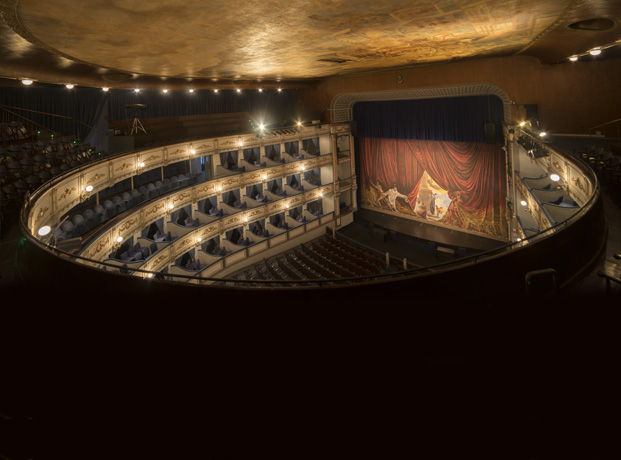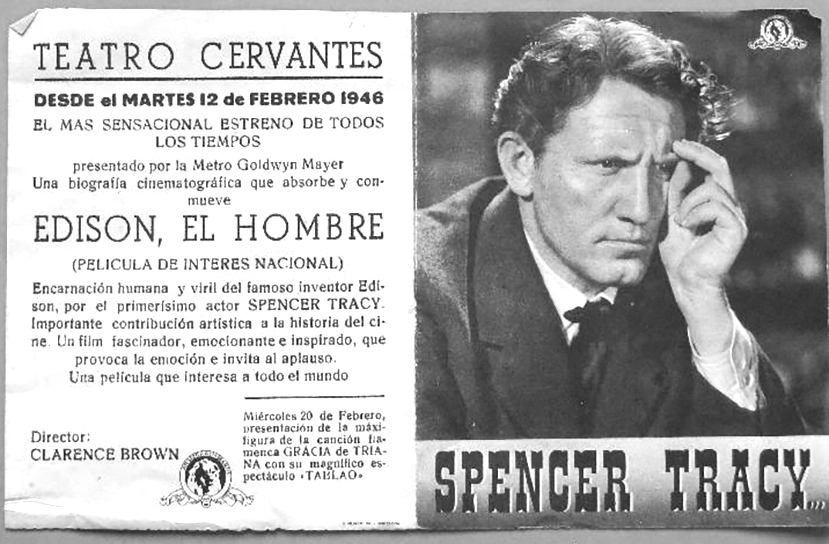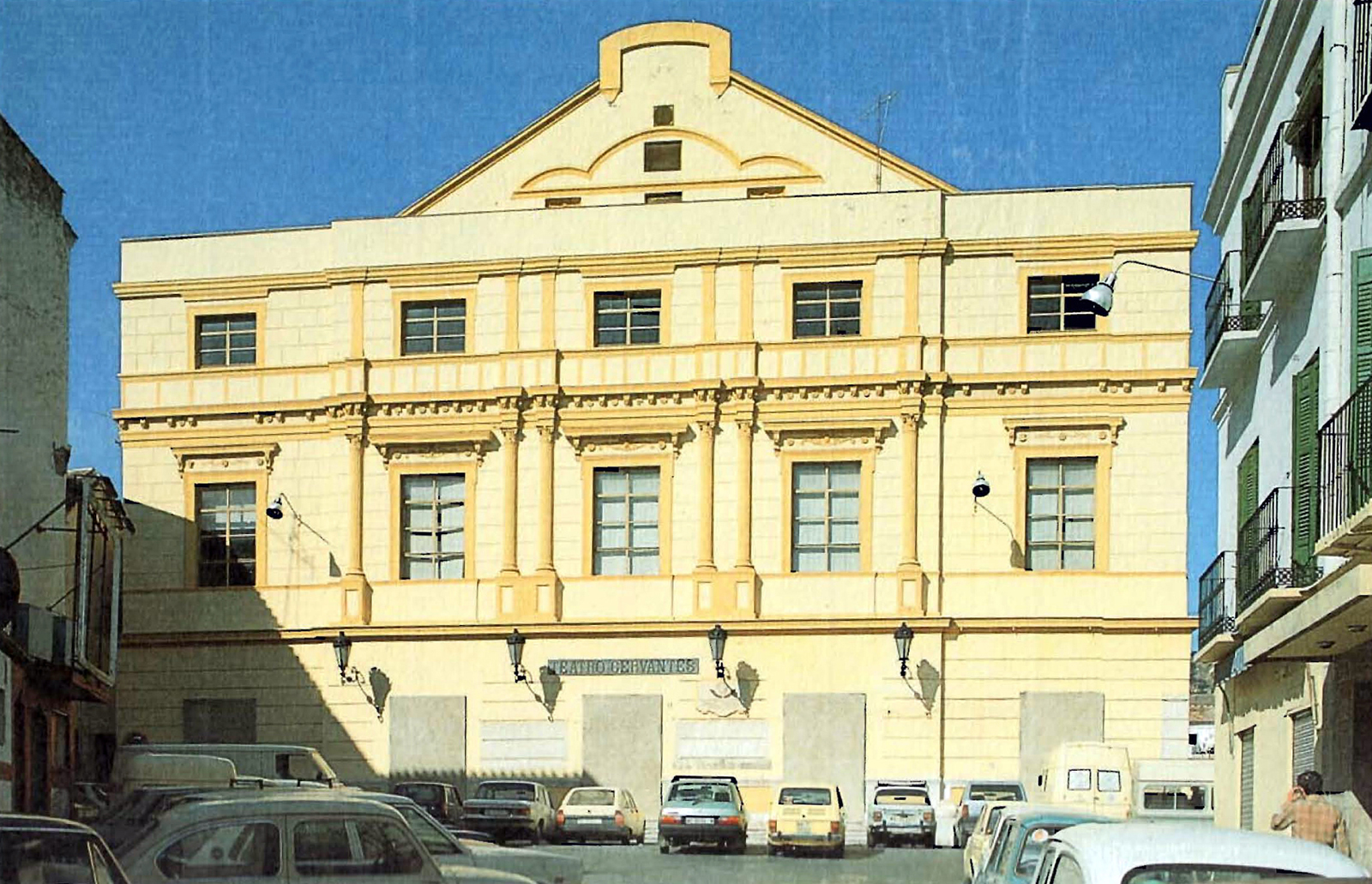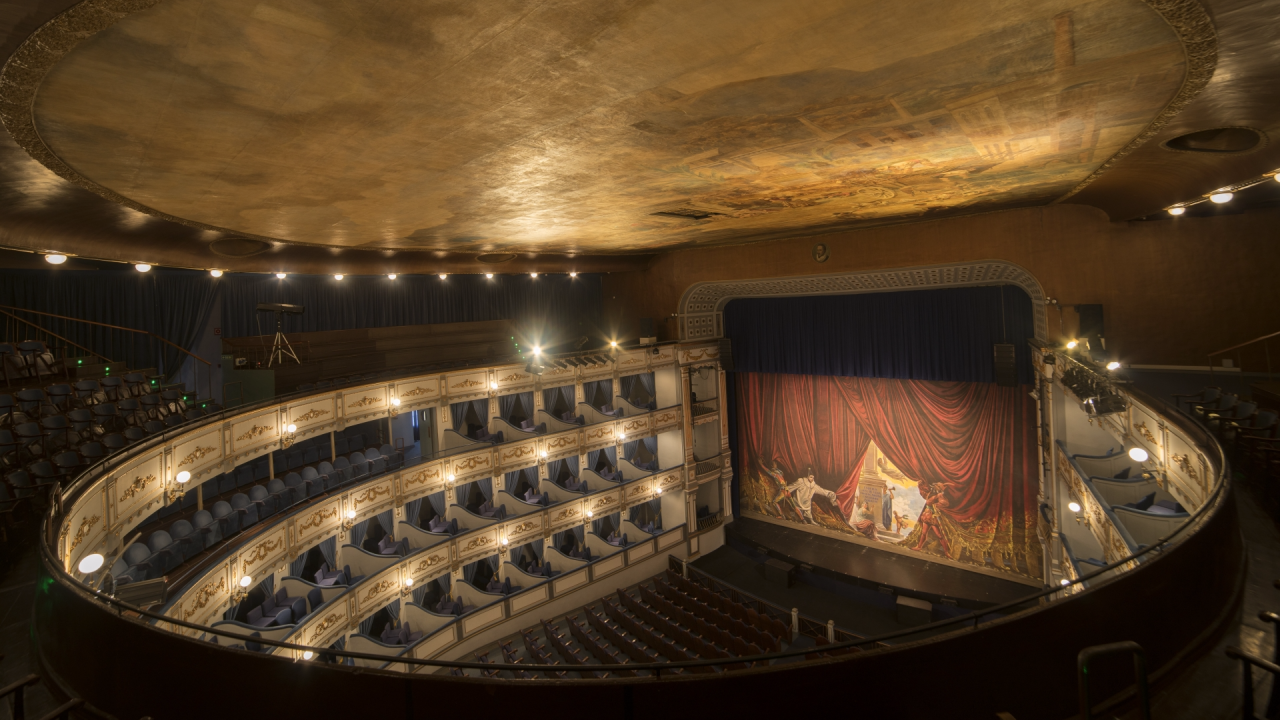
Teatro Cervantes / History
TEATRO CERVANTES DE MALAGA
Architect Geronimo Cuervo y Gonzalez (Madrid, 1838 - Malaga, 1898)
Eclecticism
Inaugurated 17th December 1870
Inaugurated as premises owned by the Malaga City Hall on 6th April 1987
Architect/Building Company Jose Segui Perez. Estudio Segui
Financed by the Malaga City Council with grants from the Ministry of Public Works and Urban Planning, Ministry of Culture and Andalusian Regional Ministry of Public Works and Transport
BACKGROUND INFORMATION
In the second half of the 19th century, a terrible fire almost completely destroyed the Teatro de la Libertad, previously called the Príncipe Alfonso, and which had been inaugurated to celebrate a royal visit by Queen Isabella II to Malaga. After the loss of this emblematic building, a prominent group of persons with strong ties to the city’s artistic and cultural life joined together with the purpose of gracing the city with a new home for the performing arts, which were proliferating due to the economic and cultural growth the city was experiencing, and at the same time to satisfy the recreational needs of the middle classes.
THE PROJECT
The city architect Geronimo Cuervo, who had previously created other significant urban architectural landmarks, was commissioned to lead the project to give the city a grand theatre. Cuervo was helped by the painter from Valencia Bernardo Ferrandiz, who was a resident of Malaga, and the two of them designed the building's decoration together. However, due to the urgency with which the construction was carried out, they were forced to get help from another painter, Antonio Muñoz Degrain.
CEILING DECORATIONS
Ferrandiz was commissioned to paint the grand drape (on which he included a self-portrait of himself as Mephistopheles) and the ceiling of the house. Here he decided to paint an allegory of the city, including a figure representing the Fine Arts in the centre of the canvas, surrounded by all the different aspects of the city's economy, which at the time was booming: agriculture, pottery, industry, transport, fishing and its strategic location as a trading port. As pointed out earlier, this economic development had given rise to a new wealthy social class that sought to promote the city’s culture by building this temple to the arts.

GRAND OPENING
Work on the new theatre was carried out from April to November 1870. The grand opening took place on 17th December with the concert version of the opera William Tell by Gioacchino Rossini. The local press highlighted the theatre’s capacity (2,300 to 2,400 people), the exceptional dimensions of the stage, as well as the ornamentation of the building, which created a truly striking effect in the interior. But without a doubt, the building’s most notable feature was its spatial design, and this is where the architect revealed his great stature and talent. Shortly after the Spanish Ministry of Culture initiated proceedings to do so, the Teatro Miguel de Cervantes was declared a Historical and Artistic Monument.
YEARS OF NEGLECT
Over the years the building underwent a series of changes that altered its appearance, but it was ultimately indifference and neglect that almost succeeded in reducing the Teatro Cervantes to ruins. In 1950, the theatre was in a grave state of decay; its facilities were adapted to comply with the prevailing legislation and a series of works were carried out that seriously altered its design, layout and architectural elements. A bar and a projection booth were set up in the building's interior and its activities were reduced to showing films.

RECONSTRUCTION
In 1984, the Malaga City Council acquired the Teatro Cervantes and financed the work to reconstruct the building, receiving grants from the Ministry of Public Works and Urban Planning, the Ministry of Culture and the regional Andalusian government’s Department of Public Works and Transport. The new theatre, with a final capacity of 1,171 seats divided up into stalls, boxes and seats in the galleries, was equipped with all the material, fixtures and equipment required by current legislation for a public theatre of its characteristics. Her Majesty Queen Sofía attended the opening ceremony on 6th April 1987, at which a concert was performed by the 'Orquesta Sinfonica Ciudad de Malaga'.
That same year, Teatro Cervantes won the Europa Nostra Award (UNESCO) for its thorough restoration work, and was considered the Best Andalusian Restoration in 1987.
In 2005 Teatro Cervantes was registered in the General Catalogue of Andalusian Historical Heritage [Catálogo General del Patrimonio Histórico Andaluz] as Property of Cultural Interest (BIC by its acronym in Spanish) in the category of Monument.

SUBSEQUENT REFURBISHMENT
In 2002 an acoustic shell was designed and installed on the stage, improving the sound for symphonic concerts and musical recitals. The ceiling, decorated with an allegorical representation of 19th century Malaga painted by Bernardo Ferrandiz, was restored in 2005. The next important modification in terms of musical performances came in 2008, with the installation of a hydraulic platform on the stage. This allowed for three different stage layouts: one with an orchestra pit for operas, zarzuelas and musicals; a second with a platform at the level of the stalls for conventional performances; and a third one with a platform at stage level to enlarge it.
In 2011 two other important interventions were made to the building and its installations. In collaboration with the City Council's Universal Accessibility Department, a lift and a hearing induction loop for users with hearing aids were installed in the theatre, as well as a new signage system featuring pictograms, easy-to-read lettering and Braille. The second action was the repair of damage to the façade and the restoration of the original 19th century colours, together with the replacement of the steps leading to the main entrance door.
In the summer of 2016 further renovation and restoration work was carried out inside the building, involving repairs of the slab and replacement of the wooden flooring in the stalls area, which had been damaged by exposure to damp. This intervention also offered the opportunity to slightly increase the slope of the stalls, thus improving visibility in the last few rows of seats.
The grand drape, an allegory of theatre which is also the work of Ferrandiz, was restored a year later. This restoration work has enabled recuperating the natural dialogue between the drapes and the ceiling conceived by Ferrandiz from both a formal point of view and in respect to its expressive content.

Malaga’s Teatro Cervantes stands out for the number and diverse nature of the activities that take place here. Meeting the demands and interests of the citizens of Malaga, whatever their age, social status, education, cultural background or other characteristics or distinguishing features is our one and only goal; this is the premise we start from when we design our programme of events.
We work to respond effectively to the application of a global cultural model based on pluralism, rigour and quality. In this sense, we do not distance ourselves from any specific genres, trends or new theatrical currents that are constantly appearing, developing and transforming the international artistic scene.
There is room for everyone and everything on our stage, because what happens on stage is nothing more than a complex but faithful image of evolution and social tastes. It is also the manner to prevent the classics from losing ground and falling into oblivion by encouraging their permanent relevance. The shows programmed at the Teatro Cervantes are listed according to the standard classification of theatrical genres: opera, music, theatre and dance, all of which are further divided into a multitude of variations which often come together in different combinations, producing results which can be difficult to describe with the standard labels.
The present day cultural offer is endless, hybrid and to a certain extent, anarchic. This the current state of affairs which we seek to present as best we can.















